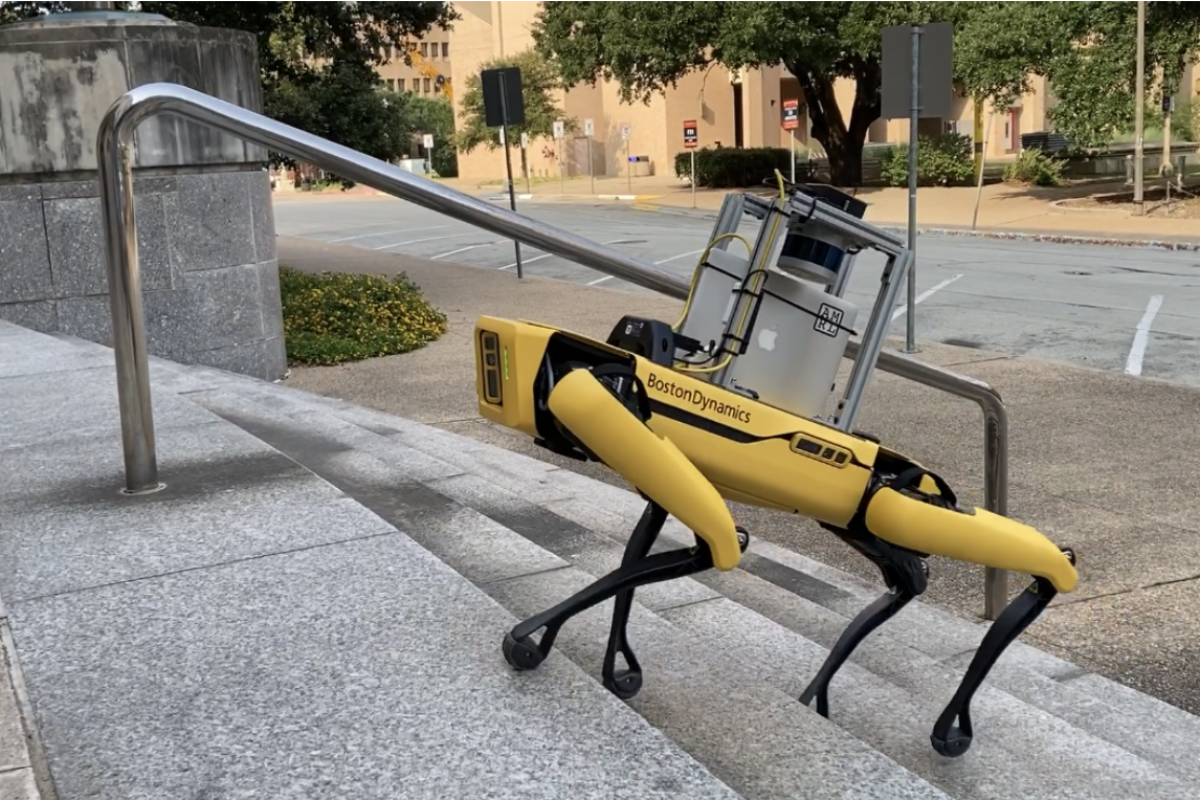Autonomous robots will roam the streets and buildings of The University of Texas at Austin campus (UT Austin). In contrast to commercial delivery services, this convoy of robots will help scientists comprehend and enhance the pedestrians’ experience whenever they meet them.

Image Credit: The University of Texas at Austin
Establishing a robot delivery network on UT Austin’s campus has been facilitated by a new grant to an interdisciplinary team of researchers. The first deployments are planned for early 2023.
The scientists propose a five-year study concentrating on what it takes to develop, safely work, and maintain this sort of robot network while adjusting to the humans who reside and work around that network.
The team’s research efforts will likely become the most wide-ranging data covering human-robot encounters in public settings. The researchers will gradually understand how advanced robotic autonomy and a real-life community can coexist perfectly.
Robotic systems are becoming more ubiquitous. In addition to programming robots to perform a realistic task such as delivering supplies, we will be able to gather observations to help develop standards for safety, communication, and behavior to allow these future systems to be useful and safe in our community.
Luis Sentis, Project Lead and Professor, Department of Aerospace Engineering and Engineering Mechanics, Cockrell School of Engineering, University of Texas at Austin
When the network is operative, members of the UT Austin community would be able to order free supplies such as hand sanitizer and wipes through a smartphone app. The robots will bring them to preset pedestrian areas on campus, door-to-door.
During this time, the robots will meet possibly hundreds of pedestrians. The scientists are keen to comprehend what types of interactions and behaviors the robots anticipate during these meetings while ensuring their responsibilities are effectively completed.
The scientists investigate human-AI partnerships as a part of the Good Systems research grand challenge. The new $3.6 million grant from the National Science Foundation boosts their six-year project Living and Working with Robots, which commenced in September 2021.
The scientists hope to use two diverse types of dog-like robots built by Boston Dynamics and Unitree. In the later stages of the study, the robots will be sent out in teams of two and remotely tracked by chaperones and people. This means that the team members will continuously have the ability to halt the robots if required.
The researchers will explore ways to enhance oversight for a convoy of robots. Nanshu Lu, a Professor in the Department of Aerospace Engineering and Engineering Mechanics, will develop wearable brain sensors to be positioned on the people tracking the robots to comprehend the amount and type of work and attention span this would necessitate.
The team anticipates gaining knowledge from watching and interviewing people who meet the robots in various contexts. Notably, the team understands that the reactions will differ extensively and are keen to create tools for appreciating the complete range of experiences meeting robots on campus can generate.
This study could help engineers fathom how future public-dealing robots should be built to co-exist in varied communities like UT Austin’s and be aware of where and how to move.
Elliott Hauser, Assistant Professor in the School of Information, will head the progress of a shared research database that will gather and communicate the many varieties of data the team and its robots will produce. Samantha Shorey, Assistant Professor of Communication Studies at the Moody College of Communication, directs the group’s activities on ethnographic studies of the community and the research team itself.
Justin Hart, Assistant Professor of Practice with the College of Natural Sciences, leads human-robot interactions in the community. Joydeep Biswas, Assistant Professor of computer science in the College of Natural Sciences, guides robot navigation in social environments. Junfeng Jiao of the School of Architecture will explore how urban informatics and smart cities research can inform the positioning of robots in social settings.
Maria Esteva of the Texas Advanced Computing Center is guiding the progress of the project’s convergent data model. Keri Stephens, a Moody College of Communication professor, is leading the team’s science efforts.